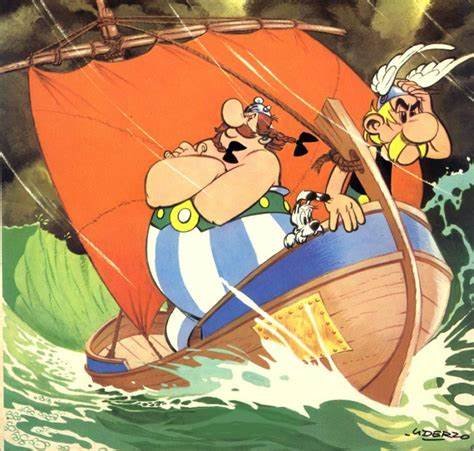Political cartoons have long been a powerful medium for expressing opinions, critiquing power, and shedding light on societal issues. Through humor, satire, and exaggeration, they bring attention to topics ranging from corruption to social injustice. However, with their ability to influence public opinion, political cartoons can also cross ethical boundaries. The question arises: where should we draw the line between satire and offense?
In this article, we’ll explore the ethical considerations behind political cartoons, the responsibilities of cartoonists, and the potential impact of crossing the line.
1. The Fine Line Between Satire and Insensitivity
Satire is at the heart of political cartoons. By exaggerating the flaws and absurdities of public figures or political systems, cartoonists aim to expose truths in a humorous or provocative way. However, satire can sometimes veer into insensitivity, particularly when it targets vulnerable groups or exploits cultural stereotypes.
- Exaggeration vs. Harm: While satire is meant to exaggerate for comedic effect, when it touches on sensitive topics—such as race, gender, religion, or disability—it can perpetuate harmful stereotypes. A cartoon that mocks a person’s ethnicity or gender could inadvertently reinforce prejudices rather than critique the issue at hand.
- Cultural Sensitivity: What may seem humorous in one culture might be deeply offensive in another. Political cartoonists must be aware of the cultural context and potential harm their work could cause to marginalized groups.
2. The Responsibility of Cartoonists in Shaping Public Perception
Cartoonists wield significant power in shaping public perception. A single cartoon can influence how people view a political figure, a social movement, or a global event. With this power comes responsibility. Ethical cartoonists must be mindful of their influence and the potential consequences of their work.
- Avoiding Misinformation: Political cartoons, like any form of media, can be misinterpreted or distorted to support misleading narratives. When cartoons oversimplify complex issues or intentionally distort facts, they risk spreading misinformation and contributing to public confusion.
- Accountability: Although cartoonists have the freedom to express their views, they must be prepared to defend their work when it sparks controversy. The ethical responsibility includes being open to constructive criticism and understanding the impact of their work on different communities.
3. The Role of Humor in Addressing Serious Issues
Humor plays a vital role in political cartoons, often helping to make difficult subjects more approachable. However, when humor is used to downplay or trivialize serious issues, it can risk undermining the gravity of the situation.
- Seriousness vs. Sensationalism: Issues like corruption, war, or inequality deserve thoughtful, respectful treatment. If cartoons trivialize these subjects by focusing solely on making people laugh, they can detract from the real-world consequences that many people face.
- Dark Humor: In certain contexts, dark humor can be an effective tool to address uncomfortable truths, but it can also be misused. For example, cartoons that trivialize violence, war, or human suffering can cross ethical lines if they fail to acknowledge the pain experienced by real people affected by these issues.
4. The Impact of Political Cartoons on Public Discourse
Political cartoons have the ability to ignite conversations, challenge ideologies, and bring attention to important issues. However, when they cross ethical lines, they can have the opposite effect: they can polarize, mislead, and harm public discourse.
- Fostering Division: Cartoons that mock or vilify specific groups, rather than engage in meaningful critique, risk deepening societal divides. Rather than fostering healthy debate, these cartoons can amplify division and promote hostility.
- Promoting Critical Thinking: Ethical political cartoons should provoke thought and encourage audiences to question authority, societal norms, and political systems. They should not simply be vehicles for partisan attacks or ideological propaganda.
5. The Role of Editorial Oversight in Political Cartoons
Given the potential for offense, editorial oversight plays an important role in maintaining ethical standards in political cartoons. Media organizations must balance the freedom of expression that cartoonists rely on with the responsibility to protect the public from harmful content.
- Editorial Review: Many media outlets employ editorial boards or senior editors to review political cartoons before publication. These editors ensure that the content aligns with the publication’s ethical guidelines, avoiding offensive or harmful depictions.
- Public Accountability: Once a cartoon is published, the public has the right to challenge or criticize it if it crosses ethical boundaries. Open dialogue and accountability are essential to maintaining ethical standards in political satire.
6. The Need for Clear Guidelines in Political Cartooning
While freedom of speech is essential in any democracy, there is a growing need for clear ethical guidelines in political cartooning. These guidelines help cartoonists understand the fine line between free expression and ethical responsibility. It also helps publications make decisions about content that may harm public well-being.
- Ethical Boundaries: Clear guidelines can include respecting the dignity of individuals, avoiding content that perpetuates harmful stereotypes, and ensuring that humor does not trivialize serious issues.
- Freedom and Responsibility: While cartoonists must be free to express their views, they must do so responsibly, being mindful of their potential impact on the audience and society as a whole.
Conclusion: Navigating the Ethical Boundaries
Political cartoons have the power to challenge, entertain, and provoke thought. However, with that power comes the ethical responsibility to avoid crossing lines that could harm individuals, groups, or society at large. Balancing free expression with cultural sensitivity, accuracy, and respect is essential for ethical political cartooning.
As society continues to evolve, so too will the ethical standards governing political cartoons. By adhering to principles of fairness, empathy, and responsibility, cartoonists can continue to contribute to public discourse without compromising the values that make satire such a vital tool for social critique.











